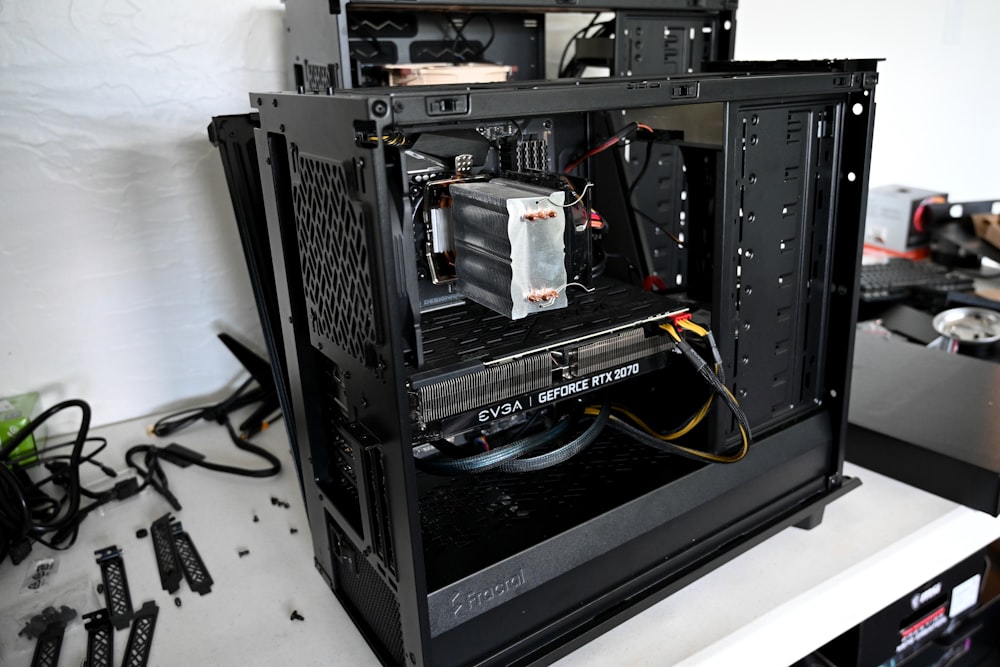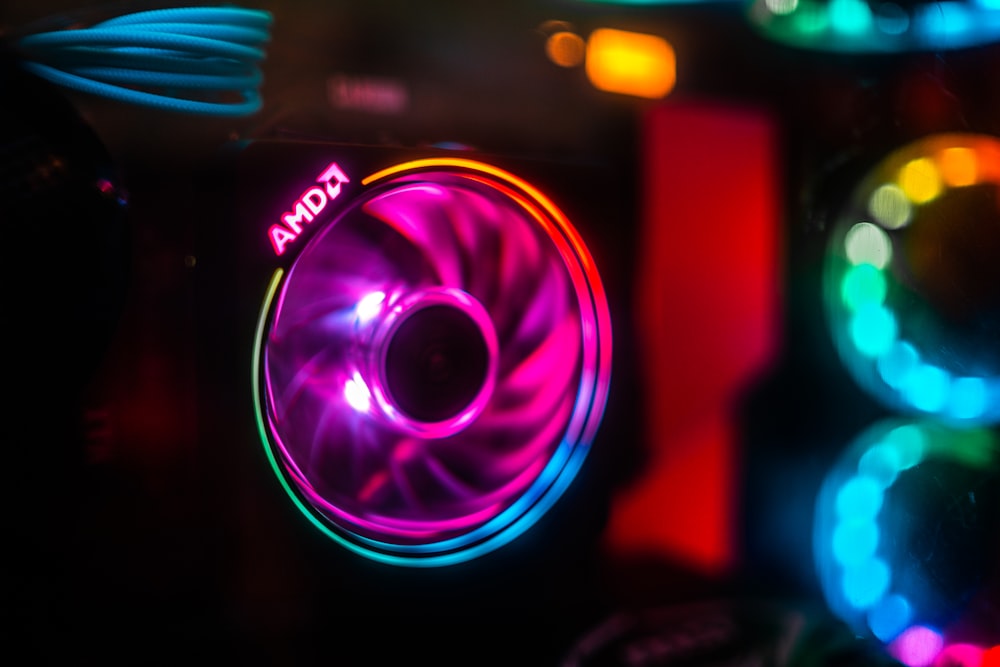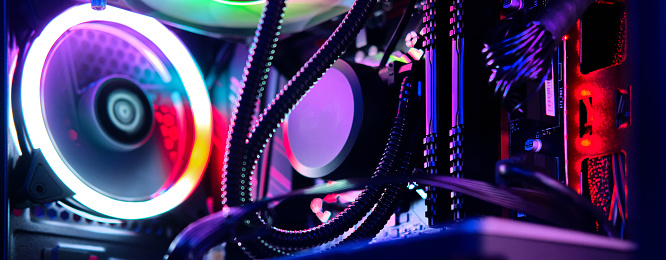Building your own PC is a great way to get the ultimate gaming machine for the best price. With the rise of popularity in PC gaming, more and more people are trying to build their own PCs. The article will explain more on where to build a gaming PC.
Building your own PC can be fun and challenging, considering there are so many different aspects that need to be considered, but it’s not going to happen overnight. You can build your own gaming PC with iBUYPOWER® using Easy Builder! Their PC builders can allow you to customize your PC and have all specs you need for your gaming PC

Related Article: How Much Does It Cost To Build A Gaming PC?
What’s the first thing you should do to build your gaming PC?
The first thing you need to do when building a gaming PC is figure out what you want. Do you want a high-end, high-performance machine that will run the latest games with ease? Or do you want something that’s more on the budget side with decent performance?
That decision will help guide the rest of your decisions on what parts to buy. For example, if you’re looking at a cheaper option, you’ll want to stick with less powerful graphics cards and processors.
If your budget allows for it, then getting a higher-end model might be more beneficial in the long run. You can get the most power possible for your money now, which will save you from needing to upgrade in the future.
What are the best parts of a gaming PC?
One of the most important aspects of a gaming PC is the graphics card. It’s what connects your monitor to your computer and it does all the processing for the games you play. A higher-end GPU will be more expensive, but will make games look better and run smoother.
The CPU also has a role in gaming–the CPU handles all of the logic in a game and can determine how good that game looks on your monitor.
It doesn’t have to be an expensive processor, but just one that can handle a lot of tasks at once without slowing down or getting too hot.
You’ll also need to decide if you want a desktop or laptop. Laptops generally have less expensive prices upfront, but they are nowhere near as powerful as desktop PCs when it comes to gaming (since their hardware is limited). If you’re building a PC for gaming purposes, then we would strongly recommend going with a desktop PC.
The Best Way To Build Your Own Gaming PC
Building your own gaming PC is a great way to save money, but it can also be an expensive and frustrating process. With the right knowledge and a little patience, building your own gaming PC is not as difficult as you might think. If you are ready to tackle the challenge of building your own computer, then read on!
There’s almost always a cheaper way to do something. It just takes some time and research to find it. Building your own PC offers significant savings in comparison to buying one that’s pre-built from a manufacturer like Dell or HP.
It will typically cost you about $550 for all the parts and pieces required for building your PC—that’s about half the price of what you would pay for a comparable pre-built desktop that has similar specifications. To build your gaming rig, here are some steps to follow:

The process of building your own PC
Once you decide to build your own computer, the first step is to purchase all of the necessary parts. You can find a list of these parts in this article, but you’ll also want to consult with experts or community forums for exact specifications on which components are best for your desired use.
Once you have everything on hand, the next thing to do is select a case and motherboard for your rig. The motherboard will dictate what components can be installed onto it and also how many hard drive bays and ports there are available for use.
Once that decision has been made, it’s time to install the processor on the motherboard. This process is not difficult at all and there are plenty of tutorials online that show how this is done.
After installing the processor, it’s time to add RAM—another crucial component for any computer system. Installing RAM is just as easy as installing the processor—you simply remove an access panel from inside your PC case and install new sticks onto their respective slots on the motherboard.
Finding potential issues before they happen
One of the best things about building your own PC is that you can troubleshoot potential issues before they happen. You’ll know exactly what goes into your PC and will be able to order parts from the manufacturer if you need to.
If something does go wrong, it’s less likely that you’ll have to deal with customer service. With a pre-built PC, there are so many different parts that could potentially fail. The manufacturer you buy it from may not have the same level of customer service as someone who is actually building your computer.
Choosing the right parts for your build
The first step to building your own PC is choosing the right parts. You’ll need to decide what you want your computer to be capable of doing, whether it be photo editing or gaming, and then find out which parts will help you achieve that.
The most important thing when deciding on the right parts is making sure they are compatible with each other. Whenever you buy a new part for your build, you should always check to make sure it will work with the other components you already have.
This way, you won’t get halfway through assembling your PC only to figure out one of the parts doesn’t work with the rest.
After deciding on the basics – like motherboard, CPU and RAM – some people choose to include an operating system like Windows 10 Home 64-bit or Linux Mint alongside a graphics card (GPU) and hard drive (HDD). These are all optional choices but may be necessary depending how you want your gaming rig to function.
How to save money on your build
Building your own PC is a great way to save money, but it can also be an expensive and frustrating process. With the right knowledge and a little patience, building your own computer is not as difficult as you might think. If you are ready to tackle this challenge, then read on!
There’s almost always a cheaper way to do something. It just takes some time and research to find it. Building your own PC offers significant savings in comparison to buying one that’s pre-built from a manufacturer like Dell or HP.
It will typically cost you about $550 for all the parts and pieces required for building your PC—that’s about half the price of what you would pay for a comparable pre-built desktop that has similar specifications.

How to build a gaming PC
Building a gaming PC is not hard if you know where to start. If you are building your own computer for the first time, it can feel overwhelming. But with this guide, you’ll be able to build your own custom-built gaming PC at home.
This guide will show you how to build your own custom-built gaming PC at home with step-by-step instructions and explanations of each part.
First, look over the parts list and make sure that you have all the parts needed before starting. If there is an item missing, go back to the beginning and search for it again or find an alternative part. The next steps are:
Components needed for building a gaming PC
When building a PC, you need to know what parts you’ll need for the build. First, you’ll need a motherboard. The motherboard connects all of your computer’s components together and is one of the most important parts of the computer.
You should also get a processor and graphics card. Then you’ll need some RAM, an SSD or hard drive, and case fans to cool down your new gaming machine.
Some important tips on building your own custom-built computer
There are a few things to keep in mind when you’re building your own custom-built computer. You should make sure that you get the right parts and that they fit together well.
Make sure to check all the connections and screws before powering on your PC for the first time. You also want to be careful not to overtighten any screws because it could damage components.
And lastly, it’s important to know what you’re doing so you don’t accidentally fry your new computer!
How do I assemble my gaming PC?
It all starts with the case. The first step is to get a good gaming PC case and make sure it’s compatible with the rest of your components. If you’re not sure what type of motherboard you need, this article can help.
It will also help if you know what type of graphics card you want to use, as this article can be helpful for learning about how much power you’ll need for your GPU.
The next step is to assemble the cooling system for your PC. You have three choices when it comes to cooling options: air, liquid, or hybrid.
Once these are done, it’s time to start assembling everything else! It might seem like a daunting task at first, but there are many tools available like our very own Crash Course on How to Build Your Own Gaming PC that can really make this easier.
Once everything is installed and connected together (i.e., graphics card and fan), plug in the power supply and then test it by plugging in a monitor before powering it up.

Tips for choosing the right parts for your gaming PC
When building a gaming PC, you’ll want to be strategic about the pieces that you buy. You might not need a new graphics card if you have an upgraded processor.
For example, if you have a GTX 1080 but your CPU is an Intel I5-2500K, upgrading your CPU would be more beneficial at this time.
When buying parts for your computer, it’s important to remember what different pieces do so you know which one to spend more money on. For example, RAM is more important than a hard drive because it affects the performance of your computer during loading screen and gameplay.
If gaming is your goal then the most important piece would be a good graphics card with plenty of video memory (VRAM). It’s also helpful to know about different motherboards and cooling systems for when you’re choosing parts for your PC.
The right motherboard can make or break your PC by limiting how much power it can use or how much RAM it can hold.
Different cooling systems are helpful depending on what kind of system you are using; they control how hot the computing components get during heavy use and how quickly they cool down after being used less.
There are three options: air cooling, liquid cooling, and water cooling units. Air cooling units are the cheapest option, but they don’t perform as well as liquid or water cooling units. Liquid cooling operates similarly to air but helps keep temperatures lower while water cooling actually submerses the CPU in fluid in order to help
Important considerations when deciding on the case
The first thing you need to consider is the type of case. There are three different types: tower, mini-tower, and laptop. Tower cases are quite a bit bigger then the others and are usually preferred for gaming PCs because they have lots of room for extra hardware, like cooling fans.
While smaller cases might be simpler to work with, tower cases will give your PC more breathing room for upgrades later down the road.
*Tower case Pros: Lots of space for upgrades
*Tower case Cons: Bigger size
*Mini-tower Pros: Smaller size that’s easier to transport
*Mini-tower Cons: Less space for upgrades
*Laptop Pros: Convenient if you travel often or need a portable PC (i.e., college students)
*Laptop Cons: Not ideal as a gaming PC because it has less space for upgrades and ventilation than tower cases
Where should I buy my parts from?
If you’re looking to build your own gaming PC, where you buy your parts will depend on how much time and money you have to invest in the process.
If you have the time and know-how, then it might be cheaper for you to find all of the parts individually. If not, there are many websites like Newegg or Amazon that sell pre-built gaming PCs.
FAQs
What is the difference between a gaming PC and a desktop computer?
A gaming PC is optimized for playing games. It has features like high-end video cards and powerful processors. Desktop computers are just general purpose computers, that can be used for anything.
How much does it cost to build your own custom-built gaming PC?
Prices vary for building a custom-built gaming PC. Some parts, such as motherboards and power supplies, are relatively inexpensive, while other parts – such as high-end video cards and processors – are more expensive. General recommendations would be $500-$1,000 on budget builds (CPU, motherboard, RAM) $2,000-$4,000 on mid-range builds (CPUs, motherboard, RAM), and $5,000+ on high-end builds (CPUs, motherboard, RAM).
Which operating system should I get for my gaming PC?
The first thing to consider when building your gaming PC is the OS. Windows 10 has been a popular option since it’s release in 2015 and it offers a lot of benefits.
It has Cortana (a voice assistant), universal applications, and compatibility with older versions of Windows apps. Plus, it’s the only operating system that comes with Microsoft Paint for free!
What to choose when you’re done building?
Once you have successfully built your PC, you will have to choose a monitor, keyboard and mouse. You can help make your decision by doing some research on what products are the best for your needs.
Conclusion
Building your own gaming PC is a rewarding experience. You’ll have the satisfaction of knowing its your every component that made it possible and have the bragging rights to show off your awesome rig to all your friends. But before you start buying parts, you need to know the steps for building a gaming PC.
First things first, you need to pick the best place to build your gaming-PC. Whether you’re looking for a budget build or have a high-end budget, there are plenty of places to find deals on the parts you need. Once you’ve decided what you’re looking for, you’ll need to get all the parts together and assemble them yourself. If you don’t know how to assemble a computer, don’t worry! There are plenty of resources online that will walk you through step by step and make sure you don’t miss anything.
After you’ve assembled your gaming PC, it’s time to pick which operating system. You’ll have plenty of choices and each one has its good qualities. Ultimately, the choice is up to you which operating system will work best for you.
For more FAQs about building your own gaming PC, check out this article: https://www.lifewire.com/building-a
